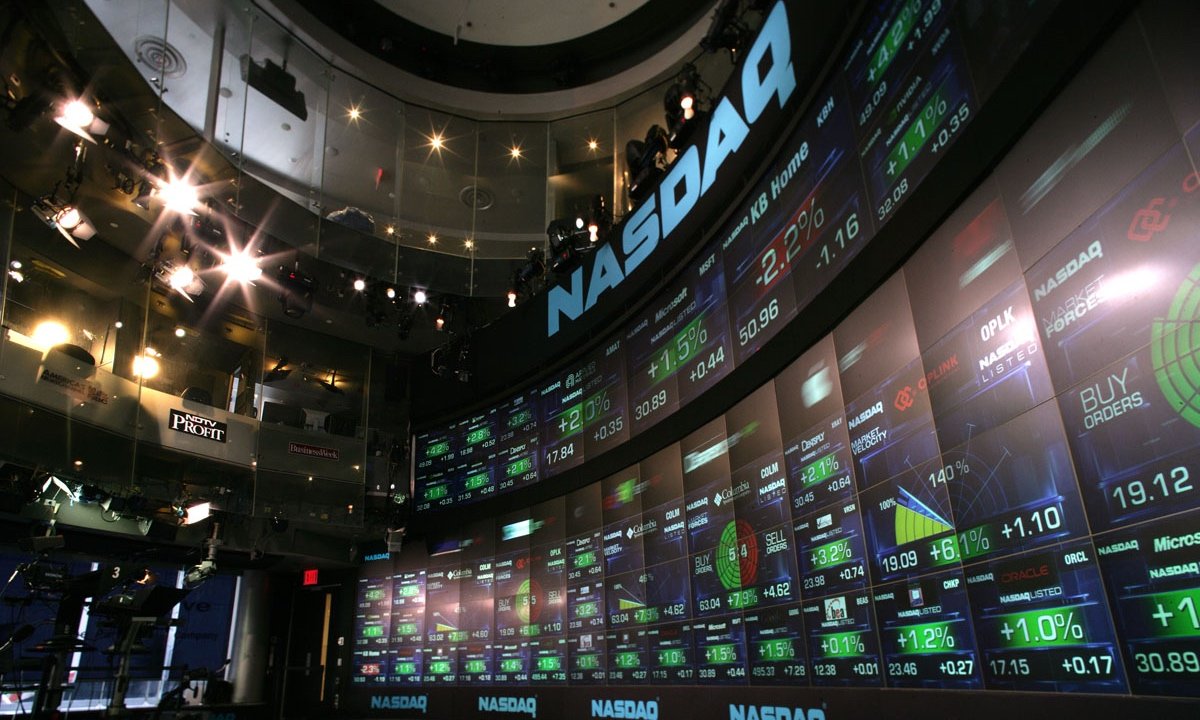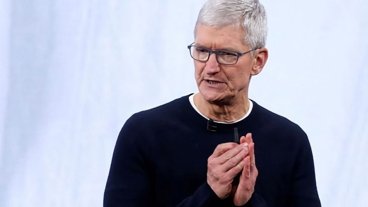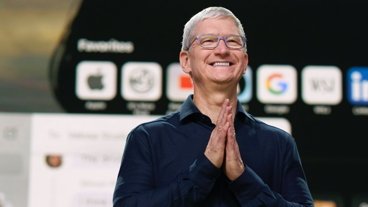Channel-check analysts warning of Peak iPhone are priming Apple shares for monster buybacks
On Monday, Katy Huberty of Morgan Stanley cited channel checks and a customer intent survey as the basis for predicting the potential for iPhone sales to fall by as much as 2.9 percent over the next year, reaching a total for 2016 as low as 224 million in a "worst case scenario." The idea of "Peak iPhone" generated clickbait headlines, but the real story is that channel checks have historically been extremely worthless at predicting Apple's actual performance.
Peak something
Even in an imagined "worst case scenario" for Apple, Huberty predicted the company's revenues would still climb by 2 percent, despite lower iPhone sales, due to new revenues from Apple Watch and other sources. That means Apple would remain the most profitable phone maker and the largest vendor of premium smartphones in the tier of iPhones.
While Huberty's report was exaggerated and presented out of context by a number of sites, there are also some key problems in the data itself. As noted by Philip Elmer-DeWitt of Fortune, Morgan Stanley's data was based on channel check estimates by Jasmine Lu, who covers the Asian supply chain for the bank.
Lu's component orders estimate described a 10 percent cut in orders (of some sort) for the current quarter and a 20 percent cut for the first quarter of 2016. Such channel checks and their interpretations have repeatedly proven to be wrong.
Huberty admitted as much when noting that the 'supply chain cuts could be due, not to weak demand, but to robust inventories,' as paraphrased by the Fortune report, which continued, 'This is not a repeat of 2012-2013, when the stock went into an extended free fall.'
However, a significant contributor to the "free fall" in Apple's stock in 2012 and 2013 came from flawed speculation around the same type of channel checks Huberty is now basing her possible "worst case scenario" upon.
This all happened before: 2012
In 2012, Citi analysts Glen Yeung, Walter Pritchard and Jim Suva issued a pessimistic report on iPhone 5 demand based on "near-term supply chain orders."
Not only was that information subsequently found to have been inappropriately leaked to hedge fund SAC Capital, allowing that firm advanced opportunity to profit from the stock selloff Citi's predictions triggered, but the information itself was not correct. Apple's iPhone 5 remained the world's top selling smartphone and continued to enjoy rapid sales even as investors began dumping Apple's stock on the "news" that the phone wasn't selling well.
Such "supply chain orders" weren't just scandalously used to fuel insider trading (Citi was subsequently slapped with a $30 million fine for this), but they were false information that had a very material, negative impact on Apple's business.
That false information was subsequently picked up by journalists and spread around throughout 2013, creating the impression that Apple was faltering and poised to lose its leadership position to Samsung, a preposterous charade that various journalists continued to repeat, despite a preponderance of evidence against such a conclusion.
Can't check a channel you don't understand
In Apple's subsequent January 2013 quarterly earnings conference call, its chief executive Tim Cook warned analysts, "the supply chain is very complex, and we obviously have multiple sources for things. Even if a particular data point were factual, it would be impossible to interpret that data point as to what it meant for our business.""Even if a particular data point were factual, it would be impossible to interpret that data point as to what it meant for our business." - Tim Cook
Cook continued to recommend that analysts not base their predictions on supply chain "checks" throughout 2013. However, a series of analysts continued to issue "supply chain check" reports that fueled headlines despite being completely wrong.
"Channel checks" were cited in March 2013 as evidence of a new Apple TV set top box that never materialized. Similar "checks" were also cited in June 2013 as proof iPhone production was being cut, just before the company reported unusually strong smartphone sales over the summer.
As analyst Benedict Evans noted at the time, "people really ought to have learned that supply chain production volume rumours for iPhones are worthless."
After the past couple of years, people really ought to have learned that supply chain production volume rumours for iPhones are worthless
— Benedict Evans (@BenedictEvans) October 12, 2013
This all happened before: 2013
Piper Jaffray analyst Gene Munster and Jefferies' Peter Misek both made unflattering predictions about iPhone 5 sales and the following year's iPhone 5c/5s launch based on "supply chain checks," then punished the company with downgrades after they were proven wrong in both cases.
In October 2013, the Wall Street Journal posted a report by Lorraine Luk, Eva Dou and Ian Sherr under the initial headline "Apple Cuts iPhone 5C Orders," claiming supplier cuts of less than 20 percent at Pegatron and "one-third" at Foxconn (seemingly far larger than the "supplier check" cuts referenced by Huberty on Monday).
The Journal didn't outline how many iPhone 5c models Apple had been building, or how many it planned to build at launch or throughout the quarter, or if the changes were planned in advance or in response to production yields. Instead, the paper simply speculated that the undefined "reduced orders" could be "fueling concerns about weaker-than-expected consumer demand and the company's pricing strategy."
By the end of the same day, the Journal had backpedaled a bit, changing its headline to "Apple's Dual iPhone Strategy in Doubt," and shifted the narrative to focus on the idea that Apple's plan to "broaden its appeal with a cheaper version of the iPhone [...] appears to be faltering after a few weeks."
A parallel report by Clare Jim and Paul Carsten for Reuters similarly speculated about changes in supply chain orders, while also also hedging its bets by noting that "analysts and Apple executives have cautioned against reading too much into supply chain adjustments, which are common in the fast-moving electronics industry."
As it turned out, Apple's iPhone 5c ended up being a top seller throughout the year, despite a supposed slashing of "orders." It performed particularly well in attracting Android switchers. Apple's flagship iPhone 5s was even more popular, remaining the world's top selling smartphone despite having a significantly smaller display than many of its big screen phablet competitors.
Huberty asked Cook about "Peak iPhone," and got an answer
In 2014, Apple's blockbuster launch of iPhone 6 was difficult to derail. Apple's sales shot up tremendously, resulting in what analysts this year like to call the "difficult compare," a high water mark that would seem to be hard to beat in a second year of selling a phone that looks very similar to last year's iPhone 6.
Apple has only reported the first weekend of iPhone 6s sales (which were included in the September quarter): a new peak in iPhone launch sales driven by the new 6s models of 13 million units, a substantial improvement over the previous year's 10 million record.
Cook noted during the September earnings call, "we exited the quarter with demand for our new iPhones exceeding supply, but we've made good progress with our manufacturing ramp in the initial weeks of October."
When Huberty asked Cook in the call's Q&A about the company's "December quarter revenue guidance for only low single digit revenue growth," and whether "Apple isn't on the verge of X growth for the first time in a decade," Cook offered some real information.
"You have to consider the constant currency growth rates," Cook said, referencing the strong US Dollar. "And so if you do that, our guidance is actually 8-11 percent, because we have about a 700 basis point FX headwind in Q1. And so, the [guidance for iPhone] growth is actually quite good."
He added, "we believe that iPhone will grow in Q1, and we base that on what we're seeing from a switcher point of view. We recorded the highest rate on record for Android switchers last quarter at 30 percent. We also look at the number of people that have upgraded, that were in the install base prior to iPhone 6 and 6 Plus, and that number is in the low 30 percentages, so we feel like we have a very open field in front of us."
Without suggesting any sort of concern about "x growth" or "peak iPhone," Cook continued, "Our performance in emerging markets, although it's quite good, and our revenue is good, our market share is low, and the LTE penetration in these markets is quite low. Also, if I zoom out and look at China, as I've said before (and just to make the point once again), is we see an enormous change in China over the next several years.
"The latest study I've seen from McKinsey indicates that if you look back five years, China's middle class had about 50 million people in it, if you look ahead five years it will have ten times that number in it. And I feel like we're reasonably well positioned in China. I'm sure we can do better, but I think we're doing fairly well there. It's not the only market that we're working on, obviously— I was really impressed last quarter with our progress in Vietnam and Indonesia and India among others."
Cook later added, "if you look at China as an example, it's over 50 percent of people that bought a 6 and a 6 Plus were buying their first iPhone."
It's hard to mistake the fact that Cook painted a clear picture that did not in any way resemble an end of the line for iPhone growth. So to issue a report that claims 'Peak iPhone may be possible, in a worst case scenario' makes it sound like Huberty wasn't paying attention or didn't care.
Return of the channel check
In early November, just over a week after Cook's comments, Credit Suisse used CNBC to announce that Apple had "cut production" orders by 10 percent, and offered an estimate for 2016 that Apple would sell 222 million iPhones, 2 million fewer than Huberty's subsequent "worst case scenario."
Apple's stock took a dive. One month later, Credit Suisse analyst Kulbinder Garcha was back with another virtually identical report, again citing "supply chain" checks, and again reversing the climb Apple's shares had taken in recovery from the last report.
Huberty issued her own channel check report two weeks later, helping to drive Apple's stock back down again to the point where the stock is now lower than it was before Cook described, from the inside, what was actually happening with iPhone sales worldwide.
At this point, Apple's ex-cash market cap is now lower than Alphabet, a company that earns less than a third the revenues or cash flow. Apple's quarterly revenue growth is also over 70 percent greater. If Apple were valued like Alphabet, it would be currently priced at around $330 rather than $112.42.If Apple were valued like Alphabet, it would be currently priced at around $330 rather than $112.42
Who's winning the most from Apple's irrationally low stock price? Ironically, it's Apple and its shareholders. That's because Apple has been burning through its capital return program, buying back billions worth of shares at prices that are stupidly low.
Apple has at least $36 billion left from its $140 billion earmarked for buybacks, making dips in the stock an opportunity to buy more shares than it otherwise could, if Apple were given a current valuation similar to its less profitable peers that are growing more slowly.
Over the last quarter, Apple spent $14 billion buying back nearly 122 million shares, representing an average price of around $114.75. This quarter, Apple has the potential to buy back as many or even more, with share prices already having dipped as low as $109. The more shares Apple can buy with its cash, the bigger impact it can have on retiring shares, which drives its Earnings Per Share metrics upward and concentrates the value of Apple across a smaller number of outstanding shares.
What may be less obvious is whether the channel-checking bankers simply don't understand Apple, or whether they fully understand that issuing dire-sounding warnings about future "worst case scenario" iPhone number shipments while at the same time maintaining a buy rating and a target stock price of $143 (27 percent higher than it currently sits) will result in exactly what they want to happen.
 Daniel Eran Dilger
Daniel Eran Dilger











 Malcolm Owen
Malcolm Owen
 William Gallagher and Mike Wuerthele
William Gallagher and Mike Wuerthele
 Christine McKee
Christine McKee
 William Gallagher
William Gallagher

 Marko Zivkovic
Marko Zivkovic









